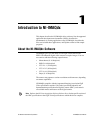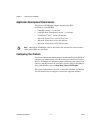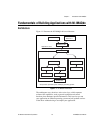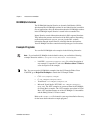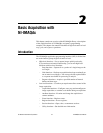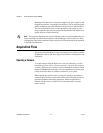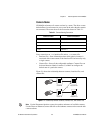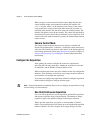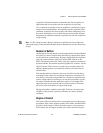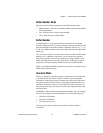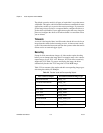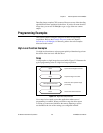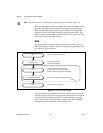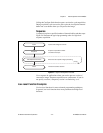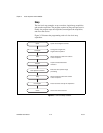
Chapter 2 Basic Acquisition with NI-IMAQdx
© National Instruments Corporation 2-5 NI-IMAQdx User Manual
acquisition. National Instruments recommends one-shot acquisition for
applications that do not require real-time acquisition or processing.
Use a continuous acquisition to start an acquisition, continuously acquire
images into the internal buffers, and explicitly stop the acquisition. With
continuous acquisition, the driver acquires video data continuously from
the camera and enables you to examine the most current buffer. National
Instruments recommends continuous acquisition for real-time acquisition
and processing.
Note If CPU activity increases during a continuous acquisition, the driver might miss
subsequent images. Check the buffer number output to determine if you have missed any
images.
Number of Buffers
Another aspect of configuration is specifying the number of internal buffers
into which you want to acquire image data. During configuration, buffers
are allocated from system memory and page-locked. Once the acquisition
starts, the camera transfers video data over the IEEE 1394 bus to the
IEEE 1394 interface card FIFO. Then, video data is directly transferred to
the internal buffer. This transfer requires negligible CPU resources. For the
GigE Vision bus, CPU resources are used to pass network packets. For
ethernet, ethernet packets are evaluated by software and copied into an
internal buffer.
Each internal buffer you allocate is the exact size of the raw data being
transmitted by the camera. For continuous acquisitions, allocate three or
more buffers. Allocating a single buffer for a continuous acquisition may
result in a high number of lost images. For one-shot acquisitions, specify
the number of buffers that the application requires. For example, if the
application runs for two seconds, and the camera acquires at 30 frames
per second, allocate 60 buffers to capture each image.
Having more buffers available for the GigE Vision bus can increase the
reliability of data transfer, especially when there are adverse network
conditions.
Region of Interest
The region of interest (ROI) specifies a rectangular portion of the image to
be captured. If the camera supports scalable video modes, the ROI defines
the portion of the image to transfer from the camera to system memory.
If the camera does not support scalable video modes, the entire image is



